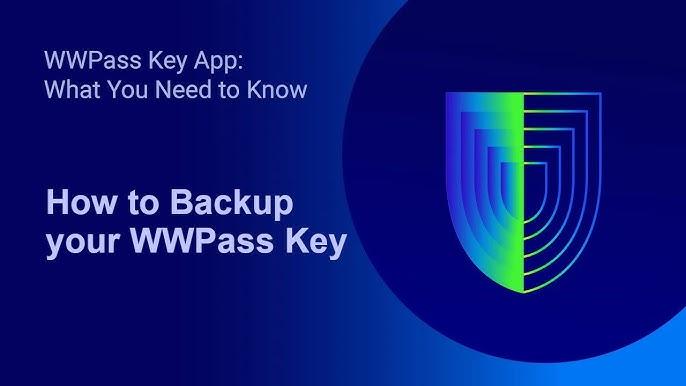
The WWPass Key Set represents a focused approach to strong, hardware-backed authentication that helps organizations move beyond legacy passwords and vulnerable single-factor systems. For an official overview and product details, see WWPass Key Set https://www.wwpass.com/wwpass-key-set. This article examines the Key Set from technical, operational, and business perspectives, explaining how it fits into modern identity and access management strategies and why it may be a good fit where security, usability, and regulatory compliance intersect.
Overview and purpose. At its core, the WWPass Key Set combines physical tokens, cryptographic key pairs, and management software to deliver strong two-factor and passwordless authentication. The solution emphasizes possession-based credentials—typically a hardware token or secure element on a device—paired with user-specific keys that never leave the secure boundary. The architecture is designed to prevent common attack vectors such as phishing, replay attacks, credential theft, and server-side breaches that compromise stored passwords.
Cryptography and trust model. The Key Set leans on asymmetric cryptography: each user or device has a private key stored in a tamper-resistant element, and a public key registered with the authentication service. Authentication challenges are signed with the private key, providing proof of possession without exposing secrets. This model enables mutual authentication and can be integrated with PKI infrastructures. Because private keys are not transmitted or centrally stored in plaintext, the system minimizes the attack surface typical of password databases.
Hardware tokens and secure elements. The “key” in WWPass Key Set refers to cryptographic keys tied to hardware tokens or secure elements in devices. Tokens can be standalone USB, NFC-enabled fobs, or embedded modules in corporate devices and smartphones. Hardware backing offers resistance to malware and software attacks that target in-memory credentials. Additionally, secure elements enforce PIN or biometric unlock policies, adding an extra layer of control that must be satisfied before keys are used.
Integration with enterprise systems. WWPass Key Set is designed to be integrated into existing identity stacks, including SSO, LDAP/Active Directory, VPN gateways, and web-application authentication flows. Integration typically leverages standard protocols or SDKs provided by the vendor to minimize custom development. Enterprises can enforce granular policies—such as multi-factor requirements, session timeouts, IP restrictions, and device binding—while monitoring events and auditing key usage centrally.
Use cases. Common deployments include:
– Secure remote access: Protect VPN and remote desktop connections with hardware-backed authentication to reduce the risk of compromised credentials.
– Web application SSO: Replace passwords for employees and contractors by enabling cryptographic logins against single-sign-on portals.
– Privileged access management: Enforce stricter controls and key rotation for administrators, reducing insider risk.
– Customer-facing services: Offer a higher-assurance login method for banking or healthcare portals where regulatory compliance demands strong authentication and non-repudiation.
User experience and adoption. A common concern with hardware-based security is user friction. WWPass Key Set addresses this by offering multiple token types and flexible workflows—PIN or biometric unlock, touch-to-sign interactions for NFC/USB tokens, and self-service provisioning options. Properly implemented, users can experience faster logins (no memorized passwords) and clearer recovery paths. To drive adoption, organizations typically pair technical deployment with training, staged rollouts, and fallback procedures during the transition.
Recovery and lifecycle management. Key lifecycle processes—issuance, backup, revocation, and rotation—are critical. WWPass Key Set supports centralized management consoles where administrators can provision tokens, revoke compromised keys, and audit key usage. Recovery options vary by deployment: some models allow secure escrow or split-key recovery mechanisms, while others emphasize irrecoverability to maximize security. Administrators must choose policies that balance the need for user recoverability with the requirement to prevent unauthorized key reconstruction.

Compliance and auditability. For regulated industries, the WWPass Key Set provides cryptographic evidence of authentication events suitable for audit trails. Because signatures are tied to hardware-held keys, organizations can demonstrate strong identity assurance for access to sensitive records. Integration with SIEM and logging platforms enables correlation of authentication events with broader security incidents and supports forensic analysis.
Scalability and high availability. Deploying hardware-backed authentication at scale requires attention to provisioning workflows, token supply chains, and management infrastructure redundancy. WWPass Key Set can be deployed in architectures that distribute load across multiple authentication servers and support geographically redundant setups, ensuring continuity for global organizations. Automation for bulk provisioning and lifecycle operations reduces administrative overhead and accelerates onboarding.
Interoperability and standards. While proprietary enhancements exist, the WWPass Key Set typically aligns with industry principles—public-key cryptography, challenge-response mechanisms, and standard transport protocols—to enable integration with third-party IAM solutions. Where possible, adopting open standards helps future-proof deployments and eases integration with evolving authentication ecosystems like FIDO, OAuth, and SAML-based flows.
Security considerations and best practices. Successful deployments follow security-by-design principles:
– Enforce multi-factor policies that combine possession (hardware token) with PIN or biometric verification.
– Use tamper-resistant hardware and certified secure elements where available.
– Implement strict issuance and revocation workflows and keep a minimal trust footprint for key escrow.
– Monitor authentication events and configure alerts for anomalous behavior such as repeated failed attempts or unknown device association.
– Keep vendor software and firmware up to date to mitigate known vulnerabilities.
Cost-benefit analysis. Investing in hardware-backed authentication carries upfront costs for tokens and management infrastructure, plus operational costs for issuance and support. However, the reduction in password-related incidents, improved regulatory posture, and lower help-desk burden for password resets often justify the investment—especially for high-risk environments where credential compromise can lead to significant financial or reputational harm.
Choosing a deployment model. Organizations typically choose between cloud-hosted management offered by the vendor, on-premises deployments for sensitive environments, or hybrid approaches. Decision factors include regulatory requirements, desired control over keys, latency and connectivity needs, and internal expertise. A pilot deployment with a representative user group helps validate workflows and technical integration before full rollout.
Future trends. As threats evolve, hardware-backed key management remains a cornerstone of strong identity. Trends such as increasing adoption of passwordless authentication, deeper integration with device identity, and better support for mobile platforms are likely to shape the next generation of WWPass Key Set deployments. Advances in secure elements and standards harmonization will improve interoperability and lower adoption friction.
Conclusion. The WWPass Key Set offers a robust path to eliminating weak credentials by combining hardware tokens, cryptographic keys, and centralized management. For organizations aiming to improve security posture while meeting compliance obligations, the Key Set provides a practical option to implement strong authentication with manageable operational overhead. Careful planning around user experience, lifecycle management, and integration will maximize the benefits and minimize disruption during deployment.
